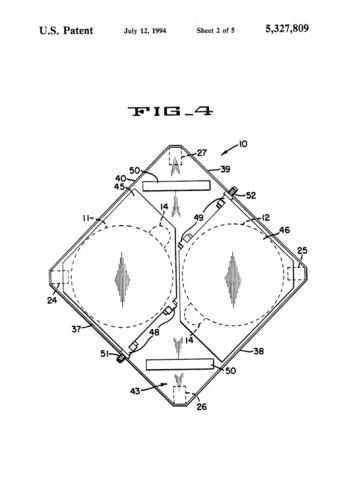TRANSVARO Attracts Attention with FEDAI Mobile Aerial Destruction Platform at SAHA EXPO 2021
January 21, 2022
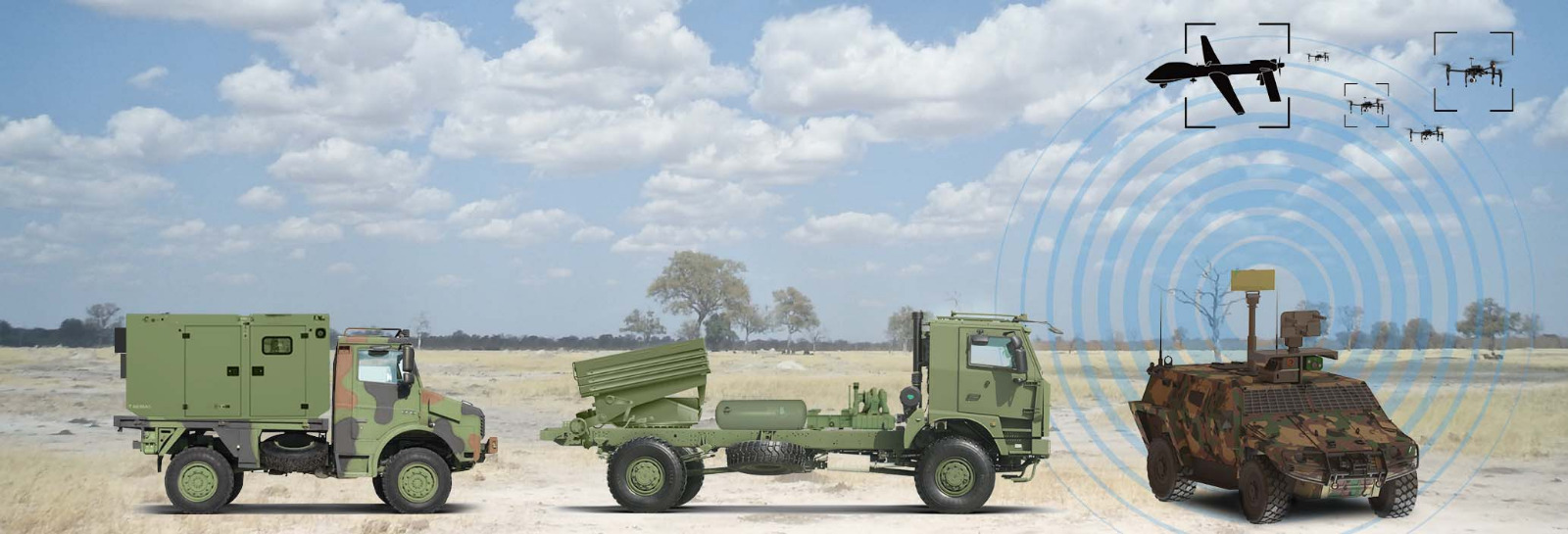
HAVELSAN Business Development Manager Nezih ŞİŞMAN made a presentation within the scope of the 3rd International Military Radar and Border Security Summit, which was held at Hacettepe Beytepe Congress Center on October 5-6, 2021, HAVELSAN Integrated UAV Detection & Defense System (HVL) developed in cooperation with solution partners TRANSVARO. He shared striking information on the FEDAI Suicide UAV System, which is a part of the EİTSS) solution. At SAHA EXPO 2021, TRANSVARO introduced its unique solution, TRV-DROKA + FEDAİ Modular UAV Detection, Recognition & Protection System, and the FEDAİ 101 Mobile Airborne Destruction Platform (Loitering Missile UAV Killer) used in the first flight/fire tests carried out in October 2021. exhibited at its stand. TRANSVARO, As of November, the performance-enhancing development and improvement (for example, on the patented wing opening mechanism) on FEDAI 101 was continuing. The company aimed to carry out the first explosive hit test and firing acceptance tests with a shot to be made from multiple launch pads in the spring, after making FEDAI 101 fully ready and obtaining special permissions until the spring of 2022. The improved version of FEDAI 101, FEDAI 102, is planned to be tested at the end of 2022.
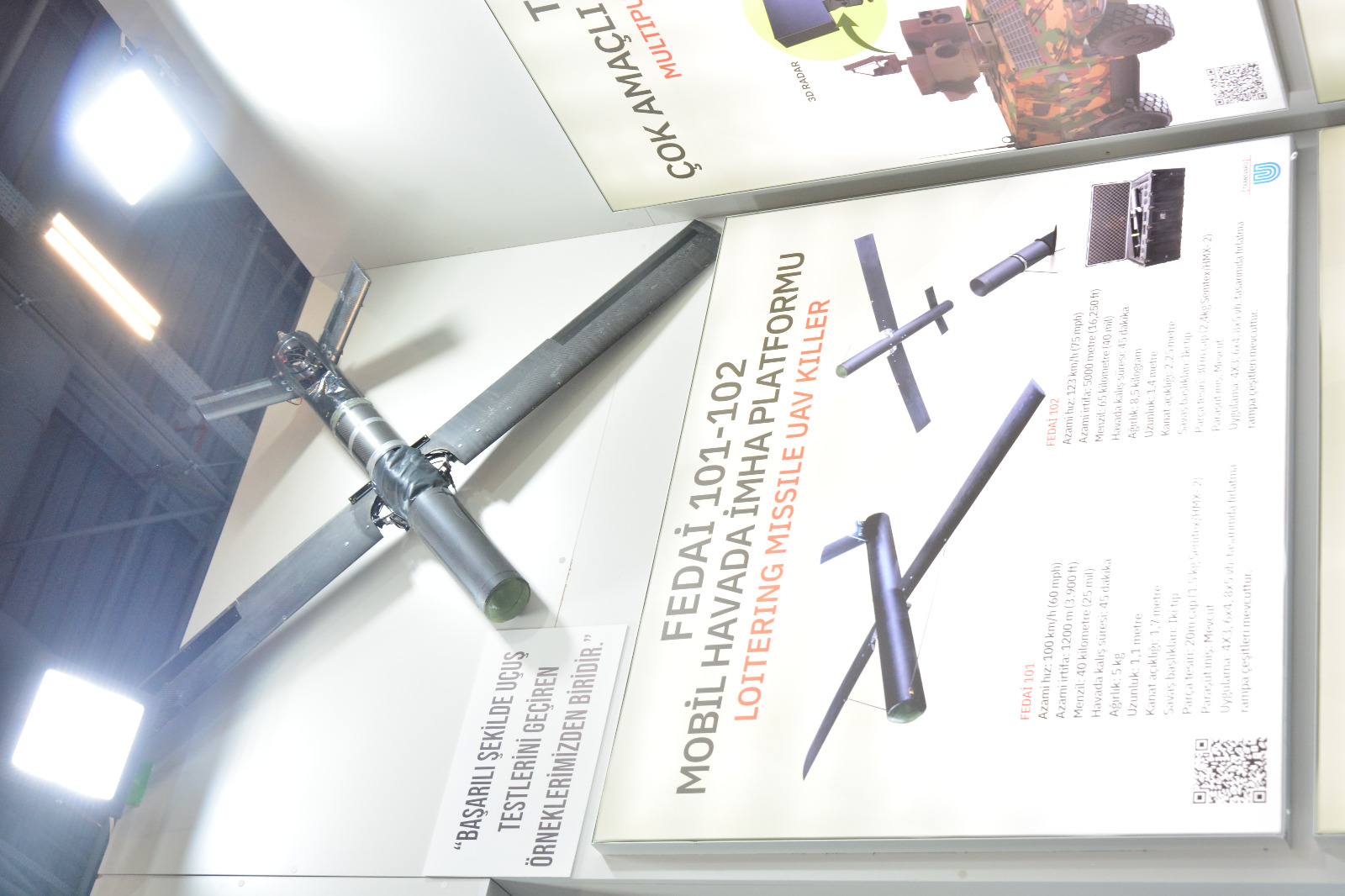
Güray Ali CANLI, Member of the Executive Board of TRANSVARO, whom I had the opportunity to meet at the stand, shared the following information about the FEDAİ Mobile Airborne Disposal Platform, which was developed against Kamikaze Drones and has a body made entirely of carbon fiber material: “FEDAİ is a part of the system we call Drone Killer. . It is doing the following for the first time in the world; It aims at the target with radar, tracks with video, and when it approaches its target, it explodes with LIDAR. This is not in the world. The second thing is the wing opening movement. It's an airplane, it glides when you turn off its engine. As the other models stay in the air with the power of the engine and do not have the gliding feature we call 'free gliding', they all fall down when the engine is turned off. What does this give us; It provides a very important control advantage and the ability to stay in the air longer.”
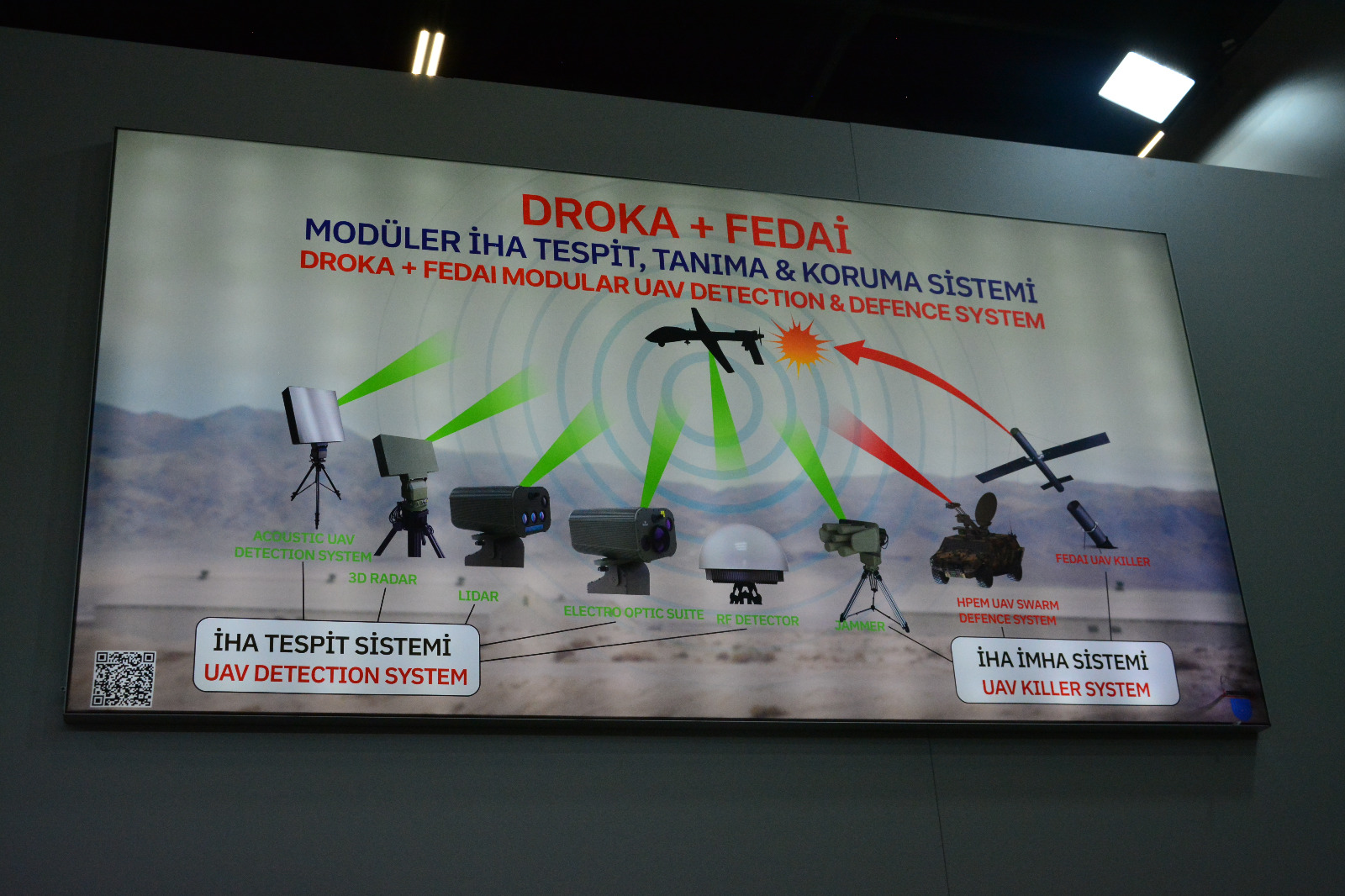
TRANSVARO TRV-DROKA + FEDAİ Modular UAV Detection, Recognition & Protection System; TRV/GSR 0802 3D Drone Detection Radar (detection range 6km+), TRV/Guard 21 EOS System (detection range 23.4km for a
2.3x2.3m target) and TRV-LDR-100 LIDAR (detection range of a drone with 2m wingspan/ 1km for UAV), HRFD-U360 RF Sensor (300MHz-6,000MHz operating frequency range, detection distance 5km and above) and Acoustic UAV Detection System products. The UAV Prevention System is; It consists of RF Jammer (working in 7 separate bands for drones), HPEM UAV Defense System (200m effective range against Swarm UAV attack, the last line of defense for autonomous drones and drone swarms) and FEDAI Mobile Airborne Destruction Platform solutions.
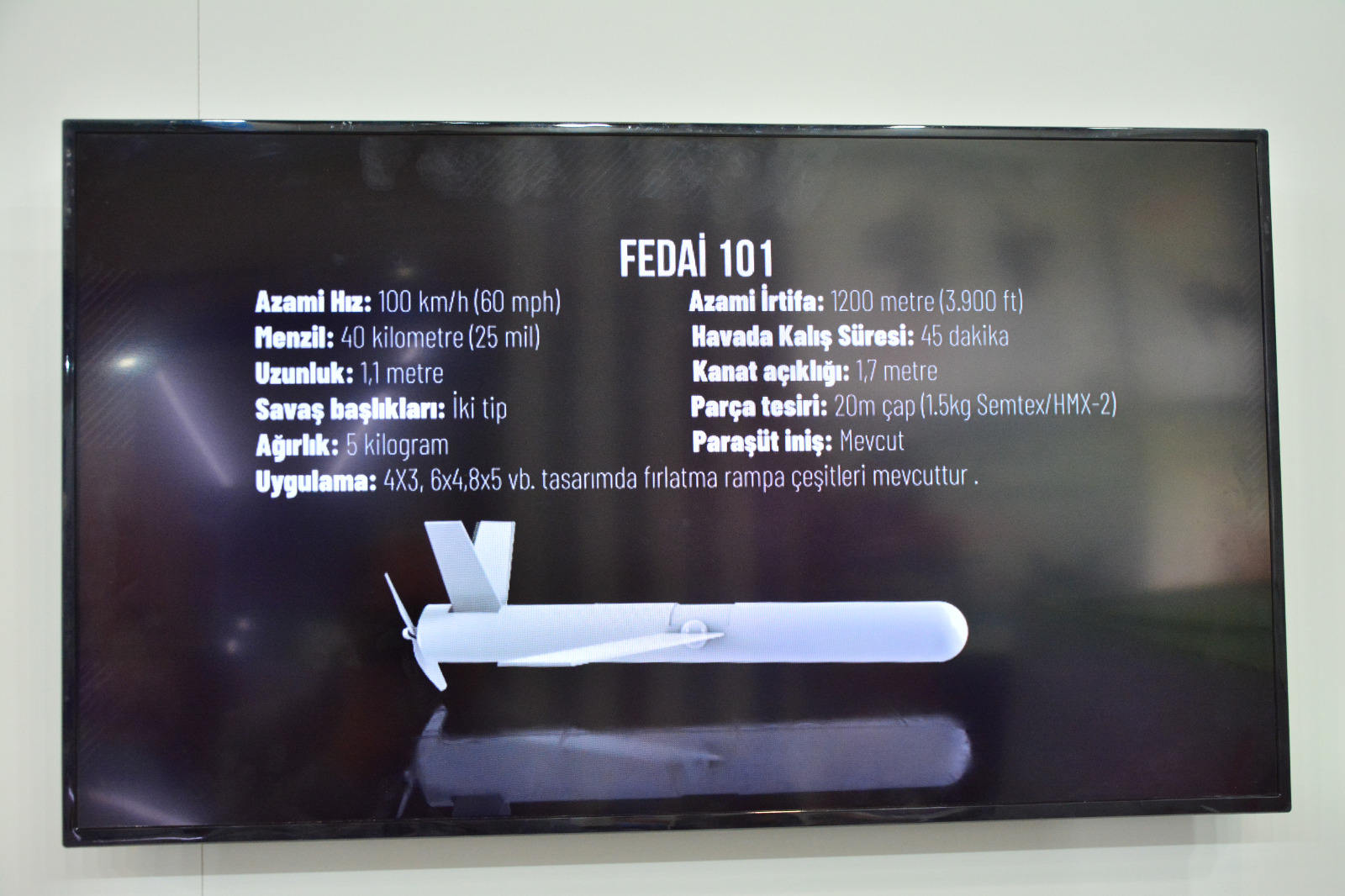
FEDAİ 101 with a length of 1.1 m, a wingspan of 2 m and a weight of 7 kg, can climb to a maximum speed of 140 km per hour and an altitude of 1,200 m from the ground (AGL / Above Ground Level), while FEDAI 102 with a length of 1.4 m, a wingspan of 2.35 m and a weight of 8.5 kg can reach a speed of 153 km / h. and 5,000m altitude (thanks to a more powerful engine and different wing and tail structure). While FEDAI 101 has a range of 40 km, this value is 65 km in FEDAI 102. Both Mobile Airborne Disposal Platforms can stay in the air for 35 minutes. While the fragment effect of the 1.7kg Semtex/HMX-2 warhead (exploding in a forward conical manner) in FEDAI 101 is effective in an area of 50m, the 2.4kg Semtex/HMX-2 warhead used in FEDAI 102 (previously with 1kg of thermobaric PBX explosive. It was shared that there were 000 particles) the effect diameter was given as 60m. Both platforms have parachute landing feature and can be launched from a single launcher or multiple launch pads (in 4x3, 6x4 and 8x5 designs).
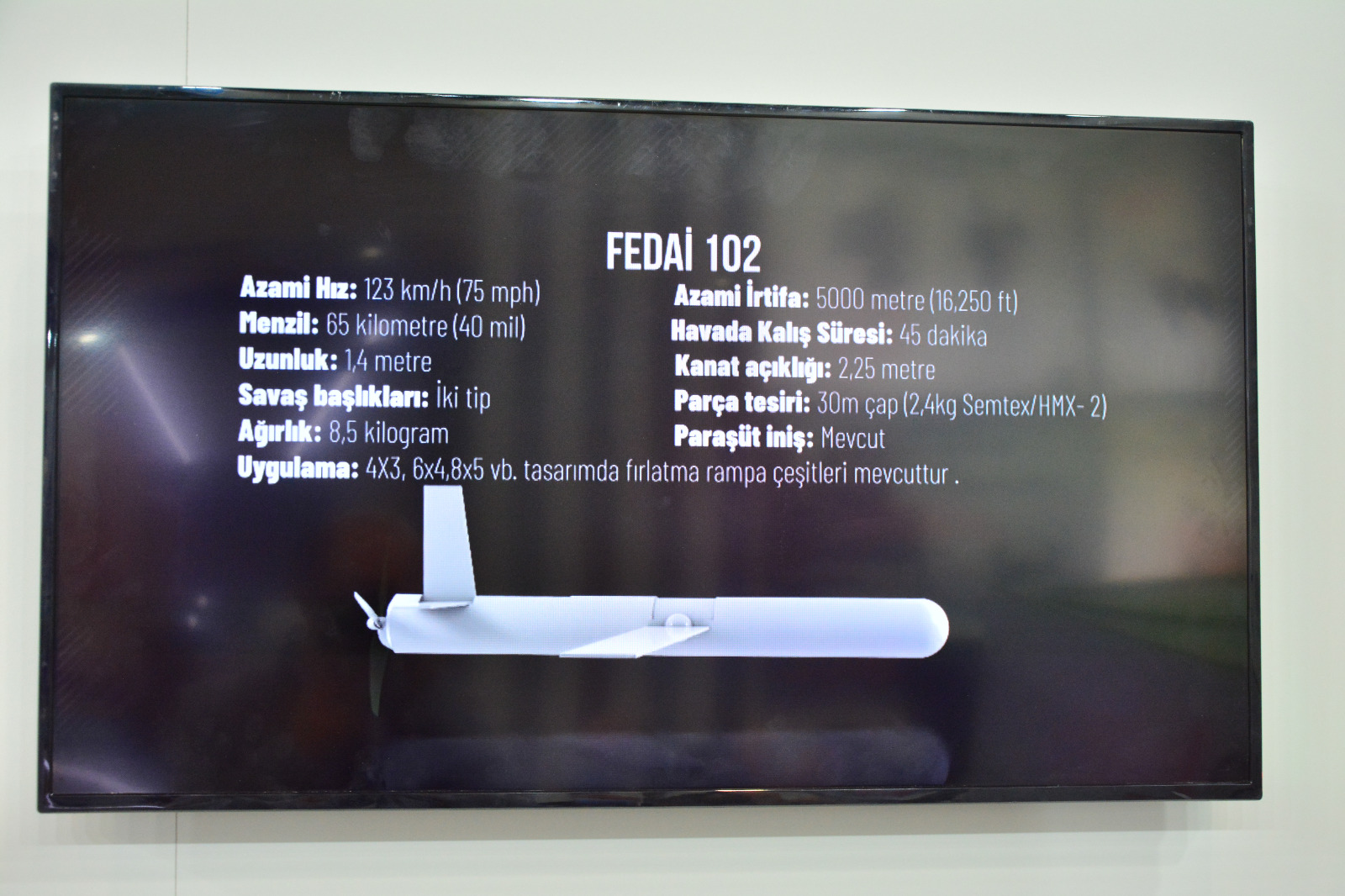
The working principle of TRV-DROKA + FEDAİ Modular UAV Detection, Recognition & Protection System can be summarized as follows: The drone/UAV is detected with 3D radar on the ground, then the EO System confirms that the detected element is a threat and determines the meeting coordinate with the target. Subsequently, this information is uploaded to FEDAI's autopilot on the ground. Then, the FEDAI Mobile Airborne Destruction Platform is launched towards the determined rendezvous coordinate (the point that will remain in the FEDAI's line of sight [FoV]). FEDAI, which performs its flight automatically to the estimated meeting point with the help of autopilot, starts tracking the target by activating the seeker head (day/night and thermal cameras and LIDAR available) in the nose from a certain distance. How to detonate the warhead by activating the LIDAR system when the FEDAI is within 70m of the target (if the only target is on the front, flock UAV is in the middle part) decides itself. When necessary, the warhead on the FEDAI can be detonated manually from the ground. In cases where two separate FEDAIs are thrown at a target, if the target is hit, the second FEDAI can be detonated in the air (if it is a duty area above the residential area) or
parachuted to the ground (outside of residential areas) to be used again. FEDAI is capable of being fired from S/UAV if desired. When used on S/UAV, it can be carried with the wings open, as well as in a tube to be attached under the wing.
Thermal cameras, LIDAR, 3D radar and auto-pilot are domestic products in the FEDAİ Suicide UAV System with ITAR-Free structure, while the battery and electric motor in the status of commercial products can be obtained from different sources. Indigenization of the warhead continues with the image processing card supplied from outside in the prototype system.


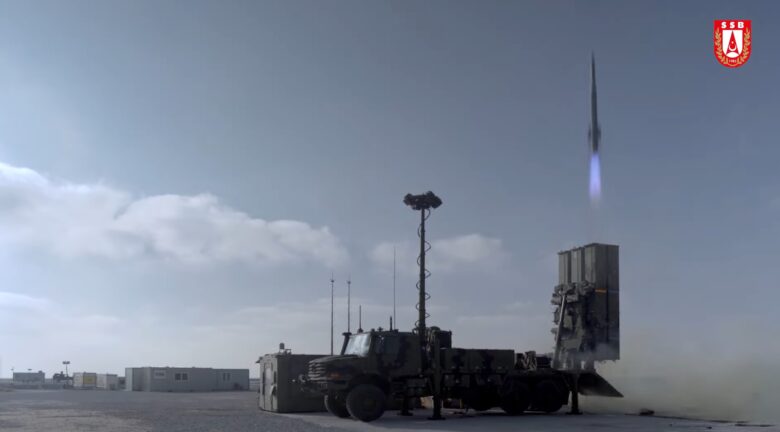
www.savunmasanayist.com






